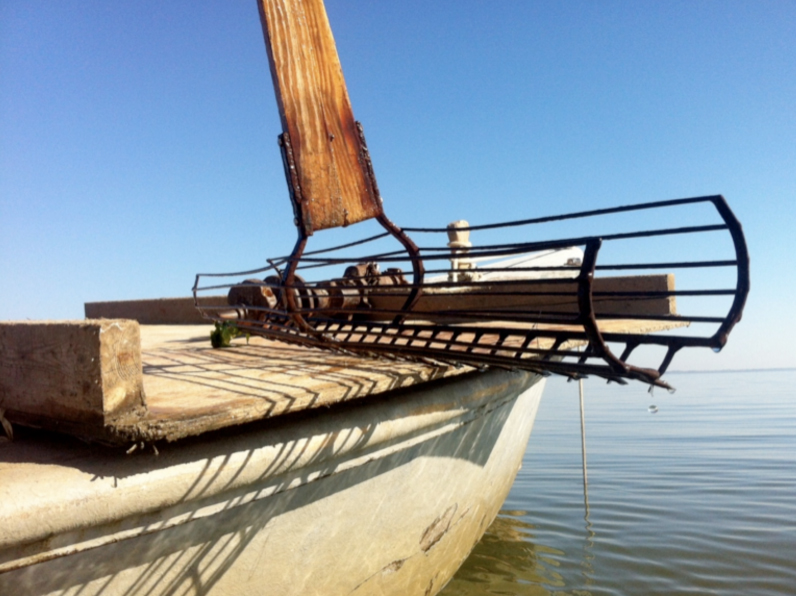Investigating the collapse of Florida’s largest oyster fishery.
In September of 2012, after years of drought, the oyster fishery in Apalachicola Bay crashed. Dr. David Kimbro and his crew have been busy examining the oysters in the bay, conducting months of surveys and experiments. What they want to know is, how exactly had the low flow of the Apalachicola River directly harmed oysters? Did the increased salinity of the water weaken the oysters, or just make it more hospitable for their predators? David’s goal is to create a long term monitoring system that would help predict oyster health and guide future management decisions.
 An Apalachicola Bay Survey
An Apalachicola Bay Survey
In the first phase of this research initiative, small sample areas across the bay were sampled to determine the relative health of reefs in different areas within it. Two divers based out of the FSU Coastal and Marine Lab harvested small areas (.5 meters by .5 meters), and allowed WFSU to affix a camera to one of them as they dove. The images they came back with show the state of the East Hole Bar, typically one of the more economically viable reefs for local oystermen, in January of 2013.
 Predatory Snails Overrun Reefs
Predatory Snails Overrun Reefs
Apalachicola isn’t the only place in Florida where historically productive reefs have failed. David is starting to see a pattern across Florida oyster reefs affected by loss of freshwater input. Is the prevalence of oyster eating snails the cause or merely a symptom of oyster reef decline?
 Researchers & Oystermen Fighting for Apalachicola Bay
Researchers & Oystermen Fighting for Apalachicola Bay
Helping Hanna and Stephanie on their sampling trips were local oystermen Shawn and Abraham Hartsfield. Using their knowledge of the bay, the father and son guide them to their sites and help determine what sampling sites are worth investigating. Oystermen and researchers have not always seen eye to eye, but they are united by a common goal: discovering the specific causes of the crash and determining a course of recovery.
 Apalachicola Bay Monitoring Experiment
Apalachicola Bay Monitoring Experiment
David Kimbro and Randall Hughes typically study intertidal oyster reefs, those along the shore that become exposed at low tide. So when David and his crew started investigating the Apalachicola oyster fishery failure, they had to adapt their techniques for a different environment. That meant more than just scuba diving in zero visibility and being more vulnerable to wind and weather conditions. They had to learn how to weld, and how to keep market sized oysters glued to their experimental apparatus.


